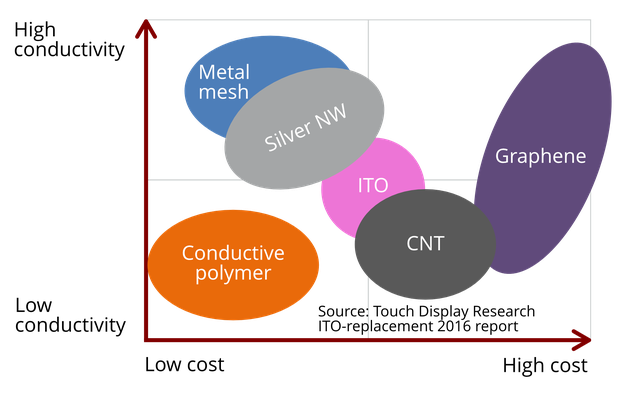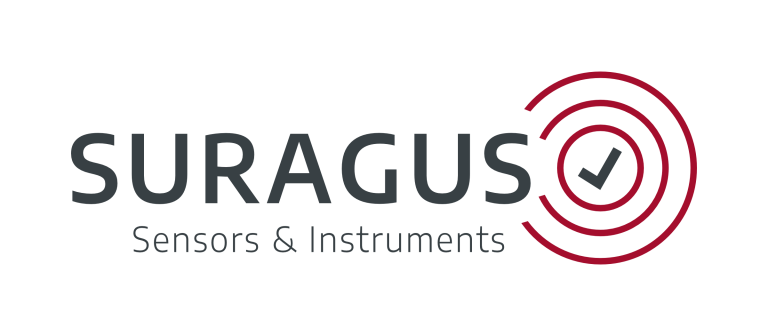Thin Film Characterization by Eddy Current Testing Technology
Functional thin films on glass, foil and wafer are crucial to many applications and industries. Modern coatings are adapted to meet the growing demand and requirements such as:
- More efficient layer stacks depending on their functionality (e.g. higher transparency with low resistivity; better emissivity)
- Increasing of layer homogenity
- Reductions in material costs through process optimization / control
- Optimization of process cycle time and machine utilization
- Adaptation of substrate size and deposition time
In order to achieve these goals, SURAGUS offers inline and offline testing technology.
Application overviews are available for the following industries:
- Wafer coating
- Wafer level packaging (WLP)
- Printed electronics
- Transparent conductive materials
- Glass
- Architectural glassTouch screens and flat monitors
- OLED and LED
- Smart-glasses
- Transparent antistatic foils
- Photovoltaics
- Thin-film
- Crystalline
- De-icing and heating
- Batteries and fuel cells
- Packaging materials
- Barriers
- Decorative
Testing
- Sheet resistance
- Conductivity
- Thickness
- Homogeneity
Substrate Types
- Wafer
- Glass
- Plastics (molded compounds)
Common Substrate Sizes
- Wafer level
- 2 inch to 8 inch
- Panel level
- 410 mm x 515 mm
- 510 mm x 515 mm
- 500 mm x 500 mm
- 600 mm x 600 mm
- 650 mm x 650 mm
Typical Layers
- Cu
- Ti
Processes
- Plating
- Sputtering
- Evaporation
Sheet Resistance Measurement
Non-contact sheet resistance measurement and determination of metal layer thickness
Single-point, mapping and inline measurement solutions
The sheet resistance, describes the ability of a square layer to conduct a certain current. This characteristic is the most important quality parameter for surface electrodes and is determined during layer deposition or for quality assurance of conductive thin films. The sheet resistance is specified in ohms / sq or OPS, in order to achieve a differentiation for the specific resistance, which is indicate in ohms.
Applications of the Sheet Resistance Measurement
| Contact | Non-contact |
|
TCO (ITO, FTO, AZO, ATO) CNT (carbon-nano-tubes) Metal-nano-wires, meshes, thin metal films in nm ranges Graphene layers |
Aluminum Molybdenum Zinc Silver Gold Copper Titanium Magnesium Alloy |
Optimization Potentials

Costs
- More favourable materials and more advantageous material combinations
- Larger substrate sizes and continues production
- Higher machine throughput by higher deposition rates/ growing rates
- More cost-effective processes: at atmospheric pressures, lower temperatures
- Optimized material usage and target utilization
Resistance
- Material variations/ combined layer stacks
- Additional layer treatment
- Doping
- Tempering
- Annealing
- Anisotropy according to layout
SURAGUS provides with the EddyCus® series quality assurance systems for the determination of the electrical conductivity. Therefore, the non-contact eddy current technology is being used to measure sensitive or encapsulated layers. The testing is automated and can be adapted individually according to customer requirements.
The usage of the systems allows
- Monitoring of the layer sheet resistance and homogenity
- Maximization of machine throughput
- Reduction of material usage (higher target utilisation)
- Regular controls on incoming and outgoing goods
Overview products sheet resistance measurement
Conductivity Mapping and Identifications of Inhomogenities and Cracks of Thin Films
Conductive layers serve in various applications as:
- Electrical functional layers
- Mechanical protective layers
- Chemical functional layers (passivation or activation)
- Optical layers.
Spatially resolved eddy current testing or eddy current impedance spectroscopy can be used to analyse the homogeneity of resistive and dielectric properties. Additionally, conductivity variations can also be utilized to allocate defects and material or process related information
Common applications are detecting layer defects such as:
- Variations in layer thickness
- Variations in material composition (content of oxide, impurities, alloy composition)
- Changes of microstructure and stress states
- Cracks, fractures, inclusions and impurities
- Strong delaminations
The eddy current method is particularly sensitive for effects that disrupt the induced current flow laterally.
The use of the systems allows the quality assurance for
- Material analysis for incoming goods inspection
- Avoiding consequential costs due to faulty materials or problems in further processing
- Ensuring the functionality of material as well as the final product
- Detection of potential material or product failure and determination of material wearing
Measurement of Optical Transparency and Sheet Resistance
The optical transparency describes the ability of light of a certain wavelength (typically in the visible region) to penetrate a certain layer, without being reflected, absorbed or scattered. It is measured in% of the intensity of the incident light on the layer.
Another possibility to describe the optical transparency (OT) is the optical density (OD), which can be calculated by using the following formula: OD = -log_10OT
The quality of a transparent electrode, is described by its electrical and optical properties. Therefore, for the development and quality assurance of transparent conductive layers always both parameters are important. The technological trend is towards ever more conductive layers with very high optical transparency.
Since both variables often have to be measured and the measurement by using several measuring systems is time-consuming, capital and space intensive, EddyCus hybrid series was developed as a universal testing system.
Applications
Many types of functional layers must be transparent to visible light:
- Transparent electrodes
- Optical layers
- Scratch protection layers
- Barrier layers
- Coated ploymer foils
- Conductive polymers
- Low-E coatings
The technological trend is towards ever more conductive layers with very high optical transparency.
Usage of Systems
The contactless measuring sheet resistance measurement devices from SURAGUS can be equipped with an additional sensor for measuring the light transmittance at a single wavelength or spectral measurement units. These combined hybrid measurement devices enable the quick and easy measurement of the sheet resistance and optical transparency.
Measurement of Sheet Resistance Anisotropy
The sheet resistivity anisotropy describes a change in the sheet resistance of a thin layer depending on the direction of the current flow. The anisotropy of the sheet resistance is based directly on an electrical anisotropy the conductive thin film.
For example, the conductivity of a layer of uniformly oriented nanowires be very high in the longitudinal direction of the wires, but much lower perpendicular to it.
Electric anisotropic layers are extremely interesting as they guarantee a certain conductivity in a desired preferential direction and maintain at the same time by using less material, a high optical transparency of the layer.
SURAGUS manufactures and sells versatile, non-contact testing equipment for electrical anisotropy and optical transparency.
The non-contact measurement of the sheet resistivity anisotropy provides an accurate and in-depth analysis of the direction, characteristics and quality of electrical anisotropy.
The derived results allow an extended analysis of the production process, fast process control and reliable quality assurance.
Applications
The measurement of electrical anisotropy is relevant where the high conductivity of a thin film is to be ensured in a certain direction and should remain a high optical transparencey of the layer.
This is especially important for:
- Transparent electrodes
- Organic photovoltaic
- Touchscreens
- Displays
- Smart-glass
- De-icing layers
Usage of the systems
SURAGUS manufactures and sells versatile, contactless testing equipment for electrical anisotropy.
The non-contact measurement of the sheet resistivity anisotropy provides an accurate and in-depth analysis of the direction, characterization and quality of electrical anisotropy.
The derived results allow an extended analysis of the production process, fast process control and reliable quality assurance.
